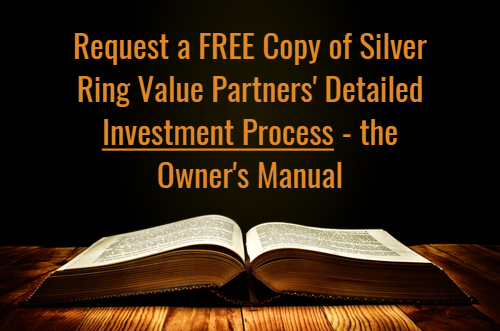When Does Volatility Equal Risk?
/Conventional financial wisdom considers volatility to be one of the greatest risks in investing. A small minority of investors, mostly among value investors – a group to which I belong, take a completely opposite view and believe that it is the probability of permanent capital loss, not volatility that constitutes risk. Neither group is entirely correct, nor should the only two options be a view that considers volatility as the main investment risk or the one that views it as unimportant. Instead, the right question to ask is when does volatility equal risk?
The conventional view equates volatility with risk
The common lexicon of judging investment performance starts with the implicit assumption that the unit of risk is a measure of the volatility of the portfolio. Many metrics in current use (e.g. Sharpe Ratio, tracking error, information ratio) compare a unit of return to a unit of portfolio volatility, measured either on an absolute basis or relative to a benchmark. In this world, a rate of return that is below average but is achieved with very low volatility can be considered an exceptionally good result. When combined with the pervasive short-termism in the investing industry, most conventional investors avoid volatility almost at any cost.
Why value investors don’t regard volatility as risk
Warren Buffett has famously stated that as a long-term investor he would much prefer a lumpy 15% annualized rate of return to a smooth 12%. Following in his footsteps, many modern value investors clearly state that they don’t worry about volatility, and instead focus their risk management on lowering the probability of permanent capital loss. After all, most of the members of this small group consider themselves to have a strong temperament and believe themselves to be able to ride out the short-term ups and downs as long as the long-term result is attractive.
Whether volatility is a source of risk is not absolute, but rather a function of the circumstances of the investor
Consider the following four investor profiles, and how volatility is likely to affect their long-term investment results:
1. The long-term investor with a strong “stomach”. Let’s consider someone with a 10+ year time horizon (a common situation for many people saving for goals such as retirement or college tuition for their children). Furthermore, let’s posit that this investor is behaviorally unaffected by volatility – they are able to stick to their investment strategy regardless of the bumpiness of the ride. For this investor type the view that ignores volatility as a risk is correct. The main consideration is the long-term annualized rate of return likely to be achieved, and the probability of permanent capital loss along the way.
2. The short-term investor. This is an investor that plans to use a major portion of the portfolio within the next 3 years. For this investor, volatility is a primary risk, as their need to take their capital out in the short-term will serve to lock-in whatever short-term results occur. Such an investor cares greatly about volatility of returns, as the more volatile return streams increase the chances of being a forced seller at a very disadvantageous price for the portfolio.
3. The long-term investor with a weak “stomach”. Consider the same investor as #1 above, but instead of a strong temperament that allows him to ignore volatility based on the long-term time horizon for the funds, this investor is behaviorally affected by volatility. This is not uncommon – many an investor who are saving for very long-term goals end up taking investment actions that are counter to their long-term interests in response to security price volatility, market news or other short-term developments. These investors should not act in that manner given their goals, but they are unable to remain rational and frequently sell at low points for behavioral reasons. This type of investor should clearly treat volatility as a risk, since a more volatile return stream is likely to result in a worse actual financial outcome, whether it should do so in theory or not.
4. The long-term investor consistently spending a small portion of the portfolio. This could be an institution, such as an endowment that spends ~5% of its portfolio to support its organization, or an individual using a small portion of the portfolio for annual expenses. Here, volatility matters – to some degree, but is not the main risk. Consider two Monte-Carlo simulations of a scenario not unlike facing many endowments today:
Scenario 1: Expected Return = 8%, Standard Deviation = 15%, Annual Withdrawal
Rate = 5%, Number of Years = 30
Source: Silver Ring Value Partners estimates
Scenario 2: Expected Return = 8%, Standard Deviation = 10%, Annual Withdrawal
Rate = 5%, Number of Years = 30
Source: Silver Ring Value Partners estimates
As you can see from the analysis above, when the volatility of returns, as measured by the standard deviation, is reduced from 15% annually to 10% annually, the probability of the portfolio not lasting the full 30 years drops significantly – from 15% to 3%.
What you should take away from all of this is two things. First, know your situation so that you can determine how important of a risk, if any, portfolio volatility is in your specific case. Second, do your best to put yourself in the position to be Investor #1 above for a substantial part of your portfolio. For more on this, please see How and Why to Be a Long-Term Investor. This will allow you the freedom to maximize your long-term returns without worrying about short-term volatility, which will put you at an advantage relative to many other market participants.
If you are interested in learning more about the investment process at Silver Ring Value Partners, you can request an Owner’s Manual here.
An earlier version of this article was published on the CFA Institute's Enterprising Investor blog.





